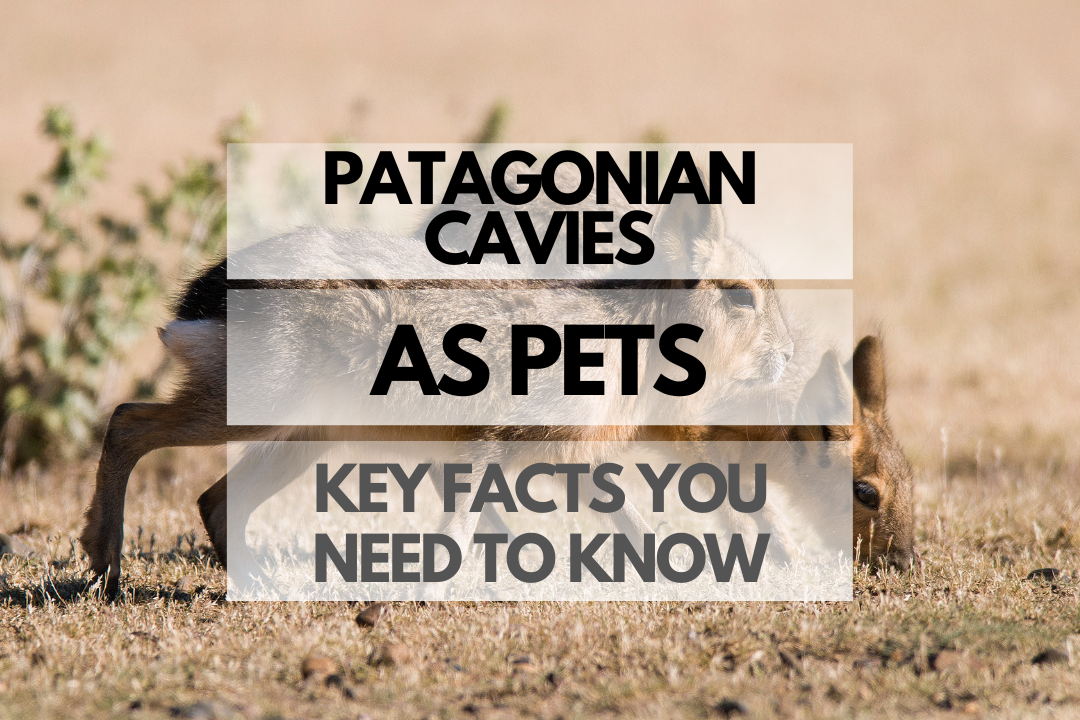If you’re looking for an unconventional, adorable, and interesting pet, you might want to consider the Patagonian Cavy. These large rodents have a lot to offer, but they also come with their own unique set of challenges. Let’s dive into the wonderful world of Patagonian Cavies as pets!
Overview of Patagonian Cavies
| Species | Dolichotis patagonum |
| Size | 16-28 inches (40-70 cm) long |
| Weight | 15-30 pounds (7-14 kg) |
| Lifespan | 7-10 years in captivity |
| Temperament | Social, gentle, and curious |
| Diet | Herbivore |
How Are Patagonian Cavies as Pets?
Pros and Cons of Pet Patagonian Cavies
- Pros: Social, gentle, curious, and low-maintenance diet
- Cons: Large size, need space, challenging to find a veterinarian, and not legal in all areas
How Much Do Patagonian Cavies Cost?
Patagonian Cavies can cost anywhere from $500 to $1,500, depending on age, sex, and availability.
Quick Facts About Patagonian Cavies
Patagonian Cavies Lifespan: How Long Do Patagonian Cavies Live as Pets?
Patagonian Cavies typically live 7-10 years in captivity when given proper care.
Looks and Appearances
Patagonian Cavies have a unique appearance, with a rabbit-like face and long legs. Their fur is brown with white markings, and they have a short tail.
Color Varieties
Patagonian Cavies are mostly brown with white markings, and their fur color can vary from light to dark brown.
Size
Patagonian Cavies can grow to be 16-28 inches (40-70 cm) long and weigh 15-30 pounds (7-14 kg).
Patagonian Cavies Temperament and Personality
Patagonian Cavies are social, gentle, and curious animals. They can be shy at first, but with patience, they can form strong bonds with their owners.
Caring For Patagonian Cavies
Are Patagonian Cavies Easy to Care For?
While their diet is relatively low-maintenance, their large size and need for space can make them more challenging to care for than smaller rodents.
Habitat
Patagonian Cavies need a large, secure enclosure with plenty of hiding places and room to run. A combination of indoor and outdoor space is ideal.
Indoor or Outdoors?
Both! A combination of indoor and outdoor space works best for Patagonian Cavies, as they need room to roam and explore.
Primary Diet For Patagonian Cavies
Patagonian Cavies are herbivores and primarily eat hay, vegetables, and pelleted food designed for large rodents.
Patagonian Cavies Treats
Occasionally, you can offer your Patagonian Cavy fruits, seeds, and nuts as treats. Remember to keep treats to a minimum to maintain a balanced diet.
Exercise
Patagonian Cavies need plenty of exercise, so be sure to provide them with room to run and explore both inside and outside their enclosure.
Common Health Issues
Patagonian Cavies can suffer from dental issues, parasites, digestive problems, and injuries. Regular veterinary care is essential to keep them healthy.
Can Patagonian CaviesLive With Other Animals?
Patagonian Cavies can live with other Cavies or similar-sized, peaceful animals. However, interactions should be closely monitored to ensure their safety and well-being.
Patagonian Cavies Breeding Considerations
Breeding Patagonian Cavies can be challenging and is best left to experienced breeders. They have a gestation period of around 100 days and can have litters of 1-3 pups.
FAQ for Patagonian Cavies as Pets
- Are Patagonian Cavies legal to own as pets?
- Patagonian Cavies are legal to own in some areas, but not all. Be sure to check your local laws and regulations before acquiring one as a pet.
- Do Patagonian Cavies need companions?
- Yes, Patagonian Cavies are social animals and thrive in the company of other Cavies or similar-sized, peaceful animals.
- Can Patagonian Cavies be litter trained?
- It is possible to litter train Patagonian Cavies, but it requires patience, consistency, and positive reinforcement.
- How do I find a veterinarian for my Patagonian Cavy?
- Not all veterinarians are experienced with Patagonian Cavies, so it’s essential to find one who specializes in exotic pets or has experience with large rodents.

